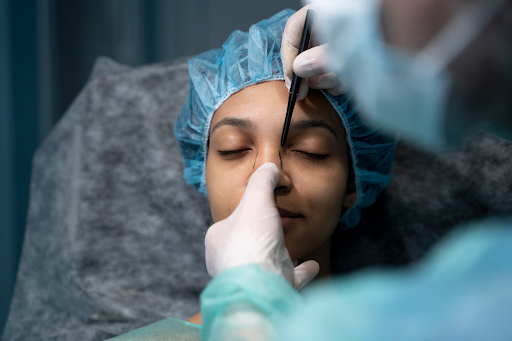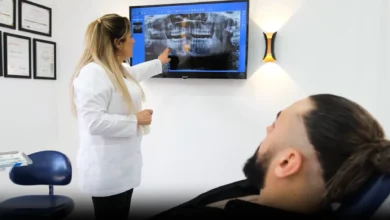How Ethnic Rhinoplasty Preserves Cultural Identity

Rhinoplasty, often referred to as nose reshaping surgery, is one of the most sought-after cosmetic procedures worldwide. However, as aesthetic preferences and patient awareness have evolved, there has been an increasing demand for a more personalised approach — one that respects individual heritage and natural facial harmony. Ethnic rhinoplasty in London caters to patients from diverse backgrounds who wish to refine their nose shape without compromising their distinct ethnic features. This procedure balances aesthetic enhancement with cultural preservation, helping individuals feel more confident while staying true to their identity. For those seeking a more subtle approach, closed rhinoplasty in London provides precise results with minimal scarring and recovery time.
Understanding Ethnic Rhinoplasty
Ethnic rhinoplasty is a specialised form of nose surgery designed to enhance and balance facial features while maintaining the unique characteristics associated with a patient’s ethnic background. It differs from traditional rhinoplasty in that it takes into account specific anatomical and aesthetic factors common among various ethnic groups, such as African, Asian, Middle Eastern, and Latin heritages. The goal is not to create a uniform “Western” appearance but to achieve natural-looking results that complement the patient’s face. Surgeons performing ethnic rhinoplasty in London understand the importance of preserving the patient’s heritage while addressing concerns such as nasal width, tip definition, or bridge projection.
The Importance of Preserving Cultural Identity
A person’s facial features are a reflection of their ancestry and cultural background. Many individuals seeking rhinoplasty are not necessarily looking to erase their ethnic traits but rather to refine or harmonise them. Preserving cultural identity means ensuring that the results respect and maintain these distinctive features. Skilled surgeons performing ethnic rhinoplasty in London focus on subtle adjustments that enhance symmetry and proportion while allowing the patient to retain the essence of their natural beauty. This patient-centred approach fosters a sense of pride and confidence, helping individuals embrace their heritage even more strongly after surgery.
How Ethnic Rhinoplasty Differs from Traditional Rhinoplasty
Traditional rhinoplasty techniques often focus on creating sharper, narrower, and higher nasal bridges, which may not align with the structural characteristics or aesthetic preferences of patients from diverse backgrounds. In contrast, ethnic rhinoplasty in London is performed with a deep understanding of the variations in skin thickness, cartilage strength, and nasal shape that differ between ethnicities. For example, African and Asian patients often have thicker skin and softer cartilage, requiring refined surgical techniques to achieve definition without overcorrection. Middle Eastern patients may seek adjustments to reduce dorsal humps or refine the nasal tip while preserving natural curvature. The emphasis is always on balance rather than transformation.
Closed Rhinoplasty: A Subtle and Minimally Invasive Approach
For patients who wish to improve nasal appearance while avoiding visible scarring, closed rhinoplasty in London offers an ideal solution. Unlike open rhinoplasty, which involves an external incision across the columella, closed rhinoplasty is performed entirely through internal incisions inside the nostrils. This technique allows the surgeon to make structural changes while leaving no external scar. Because of the reduced swelling and shorter recovery period, it’s a popular choice among patients seeking subtle yet impactful results. When performed by a surgeon experienced in ethnic rhinoplasty, the closed approach can yield precise enhancements that maintain natural facial harmony.
Common Goals of Ethnic Rhinoplasty

Every patient has unique concerns and desired outcomes, but common goals of ethnic rhinoplasty in London often include refining the nasal tip, narrowing wide nostrils, adjusting bridge height, or improving breathing function. In some cases, patients may also wish to address asymmetry caused by previous trauma or congenital differences. The key is maintaining balance — enhancing the nose so it fits naturally within the patient’s facial structure without appearing surgically altered. During consultation, surgeons discuss each patient’s aesthetic goals, cultural considerations, and anatomical features to design a customised treatment plan.
Combining Function and Aesthetics
Beyond cosmetic improvements, ethnic rhinoplasty in London can also correct functional issues such as a deviated septum, nasal obstruction, or breathing difficulties. Combining functional and aesthetic goals ensures that patients not only achieve a refined look but also enjoy improved nasal airflow and comfort. For those who opt for closed rhinoplasty in London, the internal surgical approach allows functional corrections to be made simultaneously with aesthetic adjustments, providing comprehensive and lasting results.
Consultation and Planning
The consultation process plays a vital role in the success of ethnic rhinoplasty. Surgeons begin by assessing the patient’s nasal anatomy, skin type, and overall facial proportions. They also take time to understand the patient’s expectations and cultural preferences to ensure the final outcome aligns with their identity. Advanced imaging tools are often used to simulate potential results, giving patients a realistic preview of what to expect. In London, reputable clinics specialising in ethnic rhinoplasty emphasise open communication between the patient and surgeon to build trust and confidence before proceeding with surgery.
The Procedure and Recovery Process
During the procedure, the surgeon makes small incisions — internally for closed rhinoplasty in London or externally for open techniques if greater access is needed. The nasal structure is then reshaped through careful modification of bone, cartilage, and soft tissue. In some cases, cartilage grafts may be used to enhance nasal definition or support. The surgery typically lasts between two to three hours, depending on complexity. After surgery, patients may experience mild swelling and bruising that gradually subsides within a few weeks. Most individuals can return to work within one to two weeks, with full results becoming visible once swelling completely resolves over several months.
Choosing the Right Surgeon in London

Selecting the right surgeon is one of the most critical steps in achieving successful outcomes. Patients seeking ethnic rhinoplasty in London should look for surgeons with proven experience in treating diverse ethnic backgrounds and an appreciation for facial balance. A skilled surgeon will prioritise subtle, natural results and use advanced techniques that maintain nasal integrity. For those considering closed rhinoplasty in London, expertise in this less invasive method ensures optimal precision with minimal disruption to nasal tissues. Reviewing before-and-after photos, reading patient testimonials, and having an in-depth consultation can help in making an informed decision.
Why Ethnic Rhinoplasty Is About Confidence, Not Conformity
At its core, ethnic rhinoplasty in London is not about changing identity to conform to a specific beauty standard. Instead, it’s about helping patients feel more comfortable and confident in their own skin. Many individuals find that after surgery, their nose better complements their facial features while still reflecting their cultural heritage. The best outcomes are those that look natural — where the nose blends harmoniously with the rest of the face, enhancing beauty rather than altering it.
Final Thoughts
Ethnic rhinoplasty in London celebrates diversity by respecting and preserving the natural features that define each individual’s background. When performed by an experienced specialist, it enhances the nose’s appearance without erasing cultural identity. For those who prefer a minimally invasive approach, closed rhinoplasty in London offers precise improvements with shorter recovery and no visible scarring. Together, these techniques empower patients to achieve balanced, natural, and culturally respectful results that restore confidence while honouring heritage. In the hands of a skilled surgeon, rhinoplasty becomes not just a cosmetic procedure but an expression of personal and cultural pride.


